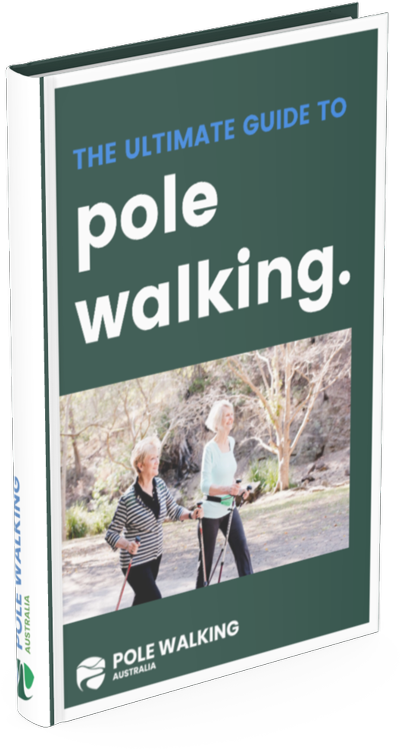Walking poles for seniors: how to choose the right ones

There may come a time in the life of an elderly person when it is necessary to have a support to assist them with walking. The obvious first step is a walking single stick, cane or poles.
What are the best walking sticks/poles for the elderly?
One of the main reasons people require a walking aid is safety. If there is a danger that someone may lose their balance and fall, then a support like a stick or poles can help prevent that. Sometimes a person may be fine on flat ground or indoors, but when faced with gutters, slopes, or rough ground, the possibility of losing their balance is increased.
Another reason for the use of a walking aid may be a loss of strength in their lower limbs. It may be useful to help improve their walking speed or ability. An aid is especially helpful when going up hills or stairs if this is the case. People who have had strokes or joint replacements may find that the strength in the affected leg is less and so in that case, a stick or other aid would be able to boost their strength when used with the affected leg.
Pain in the hip, knee or ankle region can cause a person to slow down or even stop walking altogether. An uneven gait and painful limp can also cause problems not only the affected leg, but the other side as well because of extra strain on the non-painful joints. The use of a support to take the weight of the affected side can help ease the pain, and, in turn, the person affected can then walk further with less discomfort.
Are sticks the best walking aid?
The obvious choice when looking at a simple walking aid is a stick. These have the advantages of being light, economical and easy to use and transport. However, there are disadvantages to a stick that might make walking poles a better option.
Walking poles are adjustable, light and portable, like the best sticks. However, there are a few differences. Firstly, you use two not one. This might seem like a more complicated way of walking but in fact, it requires a fairly simple opposite arm to leg technique, like marching. This is the same as required when using a stick correctly, except you use two instead of one. The advantage in this is that it evens up your walking so you are not leaning more to one side than the other.
Secondly, the poles are higher than a stick would be, so your elbows are bent at 90 degrees, not by your side. The advantage of this is that you are able to stay more upright. Pushing down slightly on the poles makes you stand straighter, as you are using your upper back and abdominal muscles.
Lastly, two poles allow you to have four even points of contact. This assists in supporting and stabilising you as you walk. A stick will only give three points, so poles are better if you have balance issues.
What is the best walking pole?
The best walking poles to use as a walking aid are those that are specially designed with the elderly in mind. Look for poles such as Urban Poling’s “Activator” model that have been designed by a health professional for use as a walking aid. They will have specially adapted hand grips, higher weight limits, and more stable paws on the ends. Trekking poles and Nordic walking poles are designed for speed and fitness first, not stability.
How do I choose walking poles?
Finding a suitable walking pole for use as a walking aid is not as simple as you think. Not all poles are equal when it comes to a stable and safe walking aid. When looking for a walking pole for seniors to use, there are several features that need to be considered.
When choosing walking poles, make sure that the poles are adjustable. If they are not, then there is the possibility that the pole will be the wrong height and may even be less safe as a result. Do not rely on a the manufacturers instructions as a user may have issues that affect the height for them. For example, if you have shoulder pain or stiffness, the pole may have to be adjusted down a little. The best way to check on the correct height is to firstly make sure the poles are adjustable, and secondly see a health professional such as a physiotherapist to check the height is correct for you.
While adjustable poles are important for getting the height right, every extra moveable part creates the possibility to increase vibration when the pole is placed on the ground. Look for a pole that has anti-vibration features. The pole may have an anti-vibration ferrule where the two or three pieces intersect. The grips and boot tips can also provide cushioning as thick rubber has ‘give’ in it.
Always check the weight limit on walking poles. Many poles have a limit as low as 20kg per pole. This can put the user at risk, especially if they rely heavily on them for stability or to offload weight. Poles with clip or button adjustment locks are more secure than twist lock ones. Collapsible, folding poles can also be less secure than ones which have a sliding mechanism.
It is important to be comfortable as sell as secure when using walking poles, and hand grips are important in ensuring this. The best poles have ergonomic hand grips that are larger than those on trekking poles, so are easier to hold, and have a small shelf at the bottom to rest the hand on. These features help to hold the hand in place without having to grip too tightly, which can cause discomfort and pain.
As people age, their wrist and hand strength decrease, and many older users have difficulty adjusting their poles because of wrist weakness. Not only is it difficult to unlock and adjust the height, but it is also hard to twist the lock firmly enough to be safe if using a twist locking mechanism. Push buttons, clip locks, or both together are easier to use when adjusting poles.
Many poles that are sold for hiking have very small and thin rubber end tips, and some come without any rubber feet, just a small metal spike. If using a pole as a walking aid, the end should have a rubber end that fits on the tip. This tip should be as wide as possible and flat, like the end of a pair of crutches, or a walking stick. Trekking poles have very small trekking tips and most Nordic walking poles have sloping, boot shaped tips, which provide less stability for the walker. It is possible to buy flat pole tips from online speciality stores. However, you need to make sure that they will fit your poles snugly and not fall off.
Older adults who require a walking aid may have many issues that affect their walking pattern. As we have found, not all poles are the same. If you are considering using poles to walk with, then it would be well worthwhile to consult a specialist pole provider or healthcare professional to give you the best advice.
Do walking poles help with balance?
All walking aids are designed to help with balance to some extent. Remember that 3 feet on the ground are better than 2 and 4 feet are better than 3. The reason for this is that there is more area on the ground to spread the load, and you can also use your arms to support your legs.
This is especially important when your legs are not working as well as they should be. For instance, there might be pain, or weakness, or numbness, which all contribute to balance problems. Offloading weight from the affected leg, or supporting it, makes you are much more stable.
Always use the opposite pole to the leg on the ground, like walking or marching. So when you step left, the right pole comes down, and when you step right, your left pole comes down.
When using poles, it is important to place the support down at the same time as the affected leg. Otherwise, the leg has to do all the work without any help. If you put the pole down at the same time as the leg, it can carry some of it’s weight.
Finally, when walking with poles, do not put them too far ahead of your feet. The pole needs to be at the same level as the opposite foot. Placing the pole level with the foot gives the leg on the ground the maximum amount of stable support as is possible.
This provides an overview of what walking poles are, how to choose them and how to walk with them. Hopefully, when you have chosen the correct poles, you will have many happy hours of walking comfortably and safely with them.


